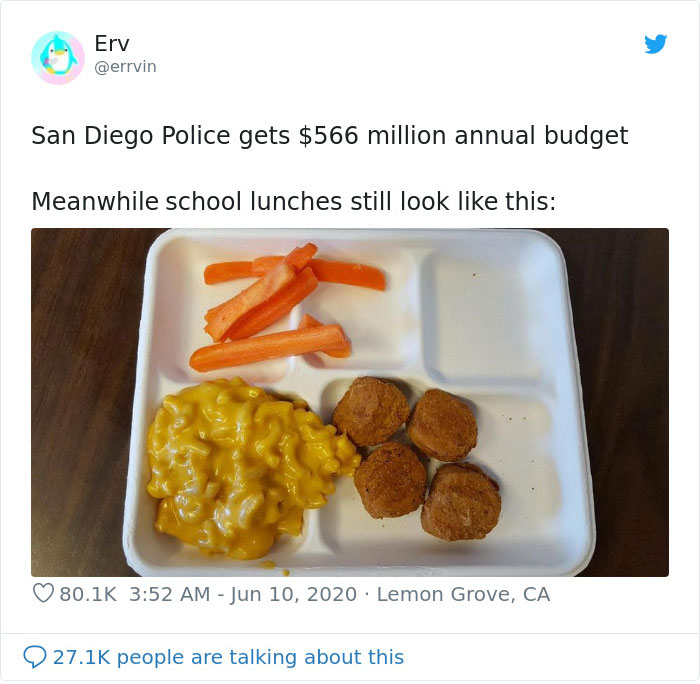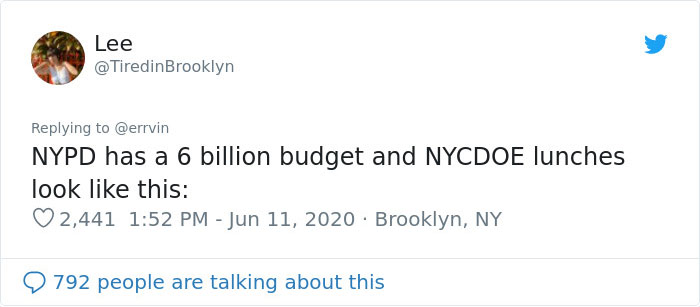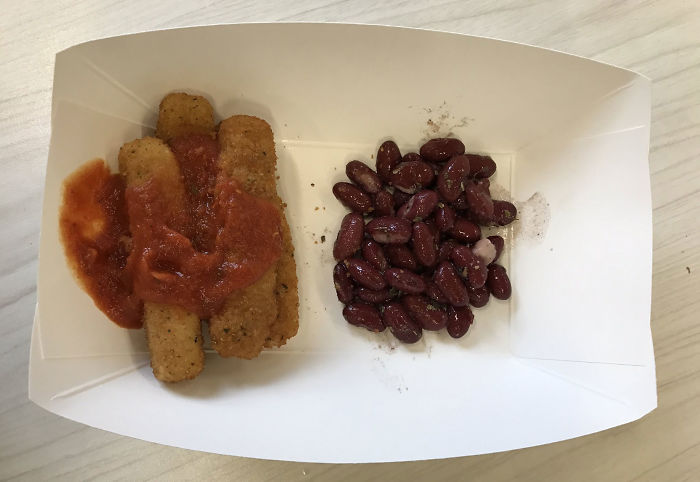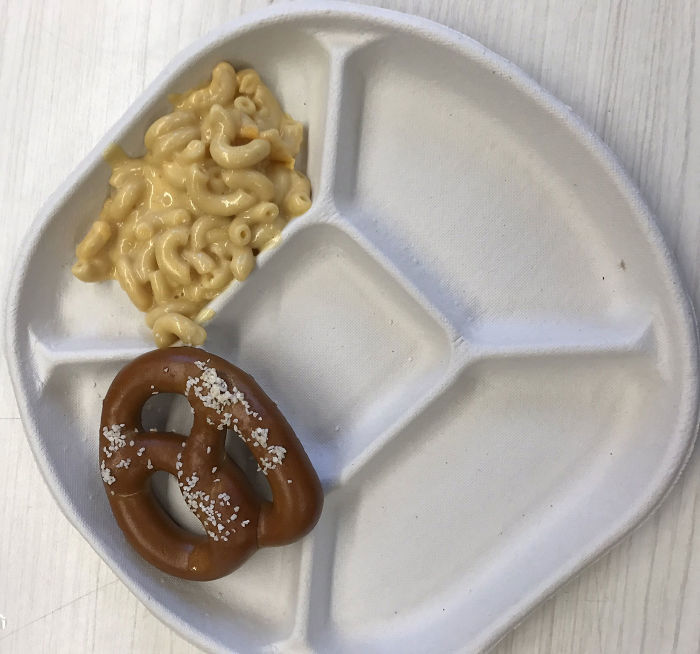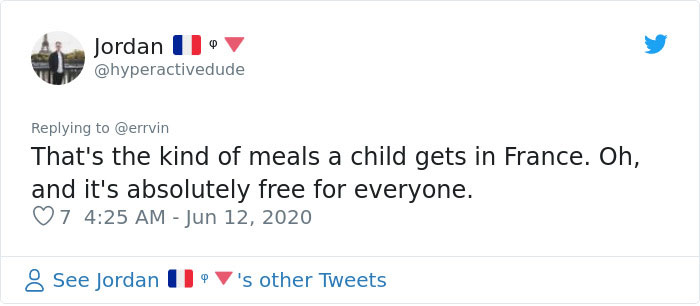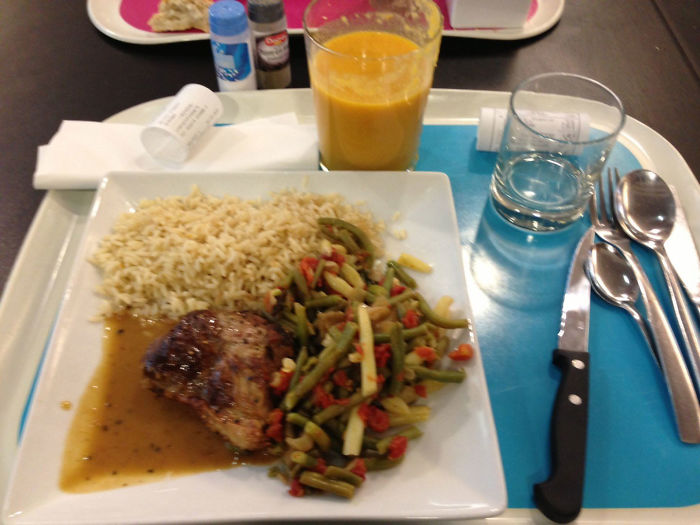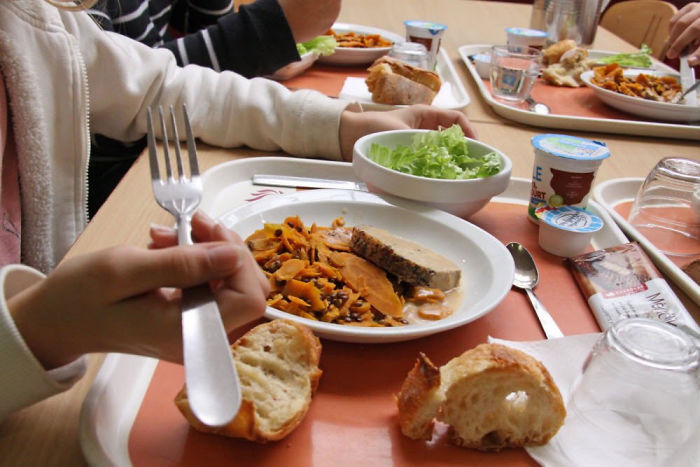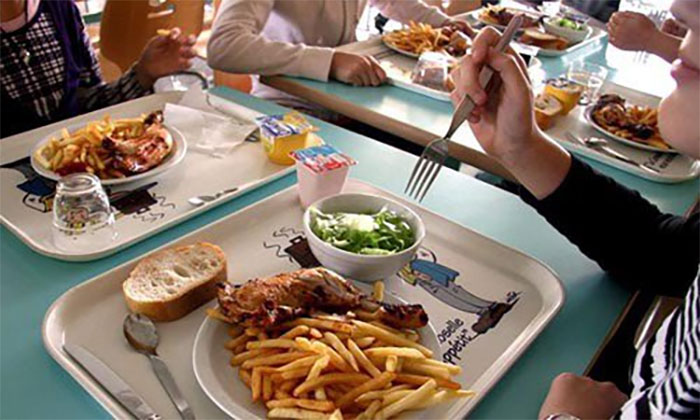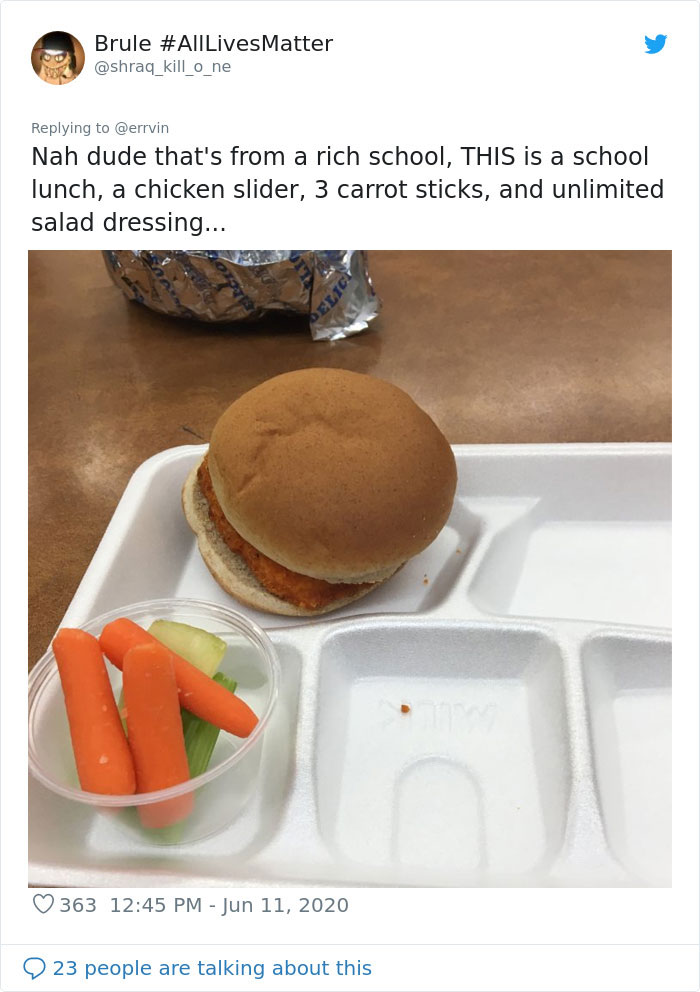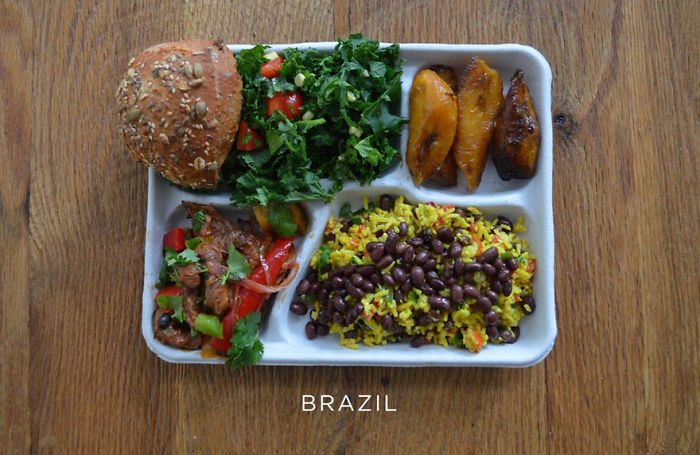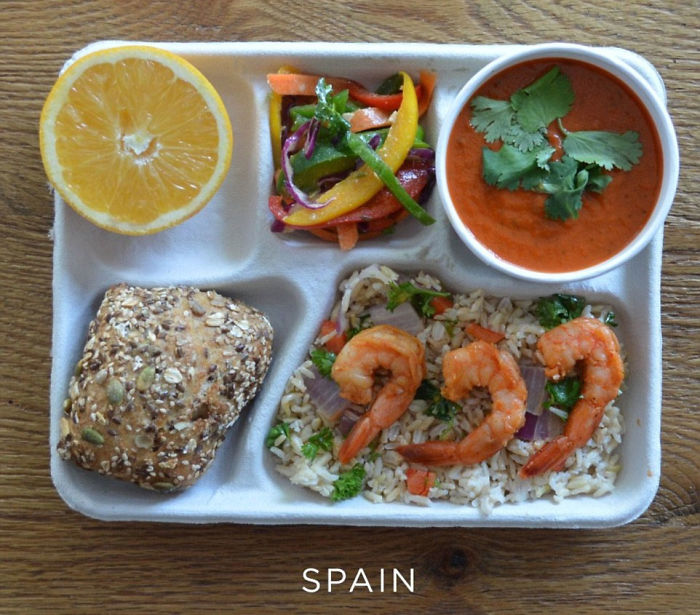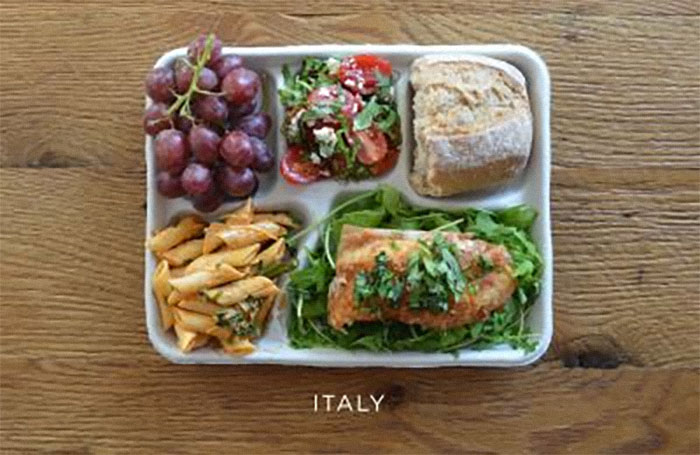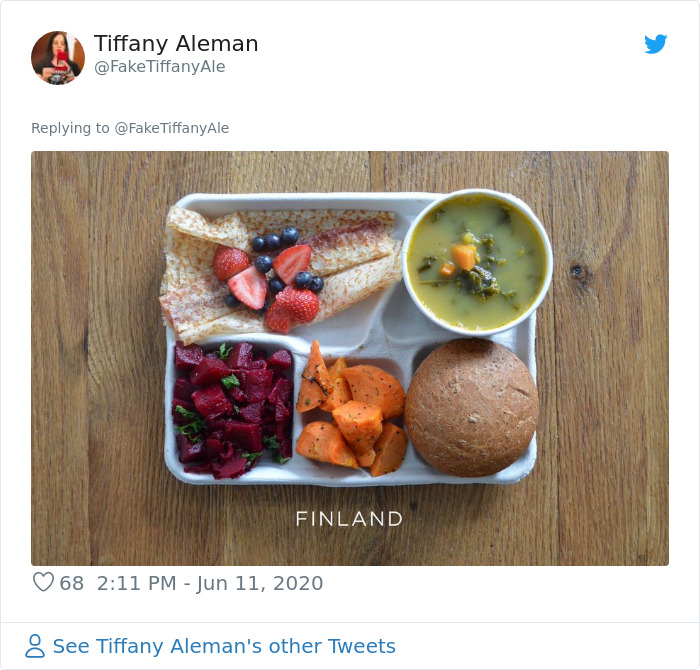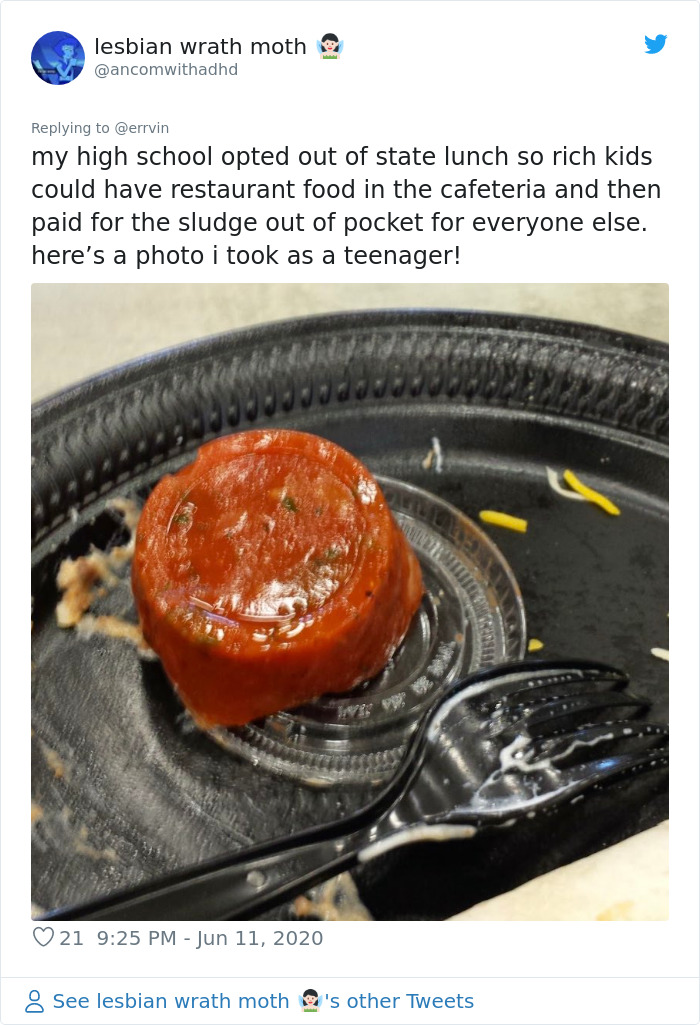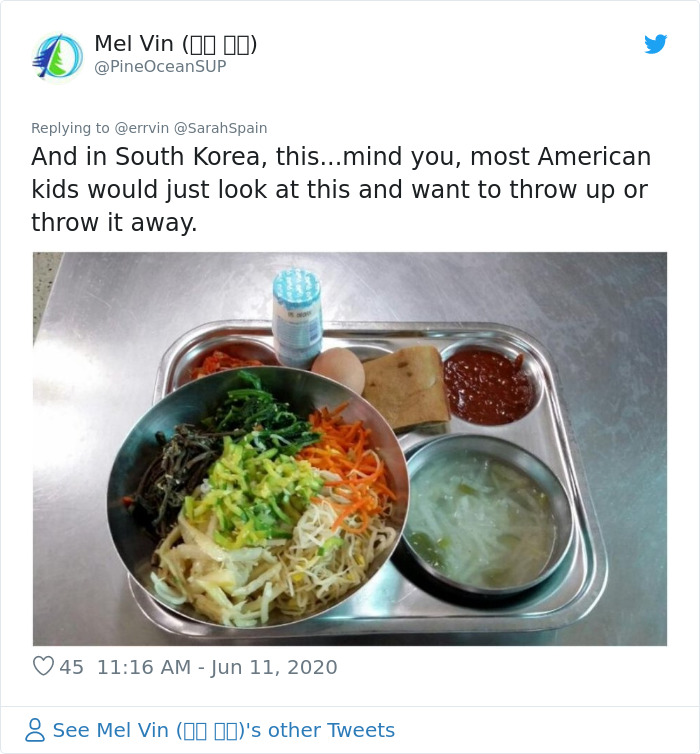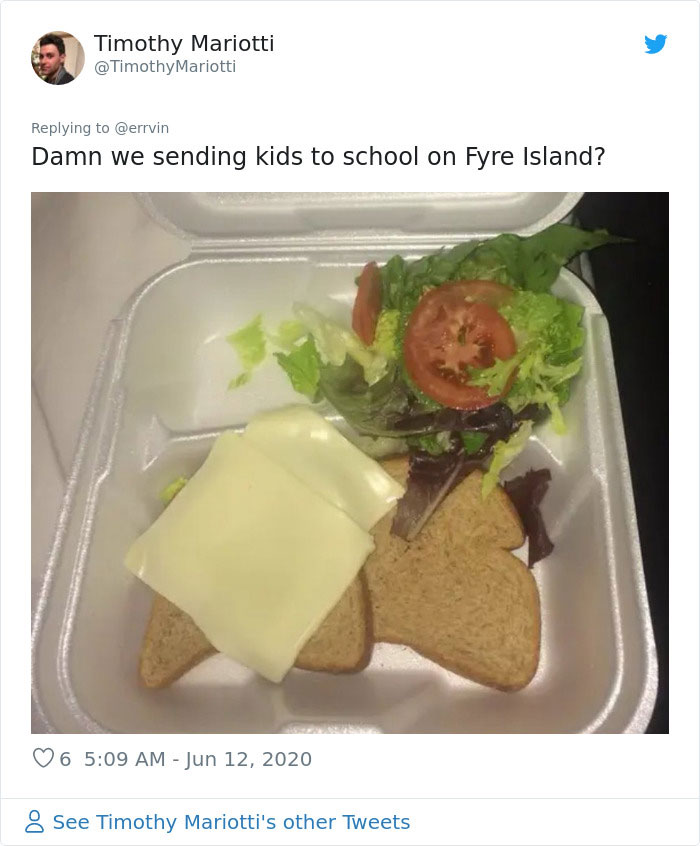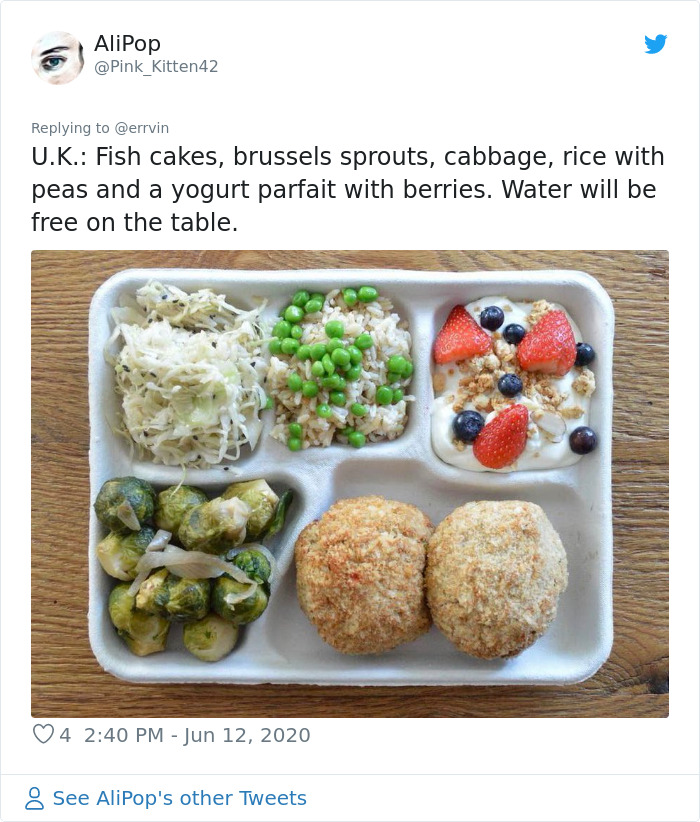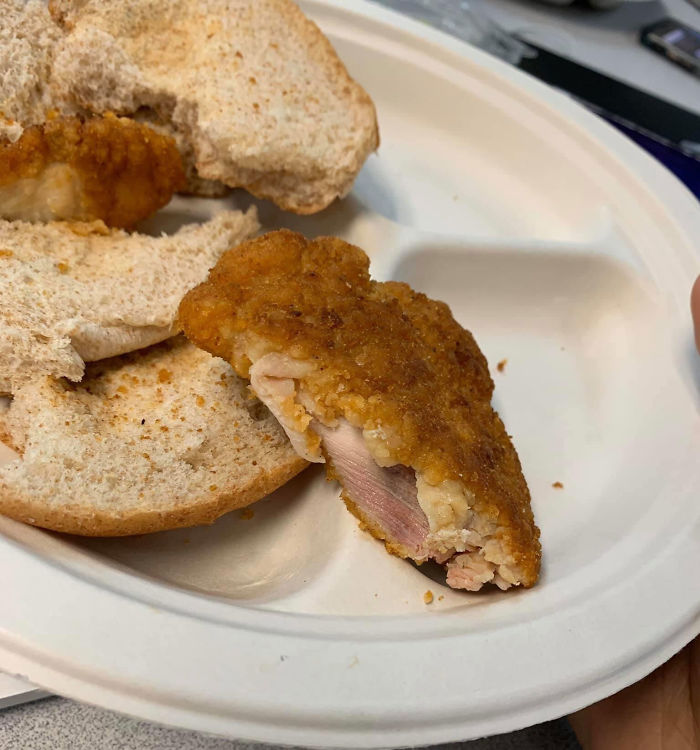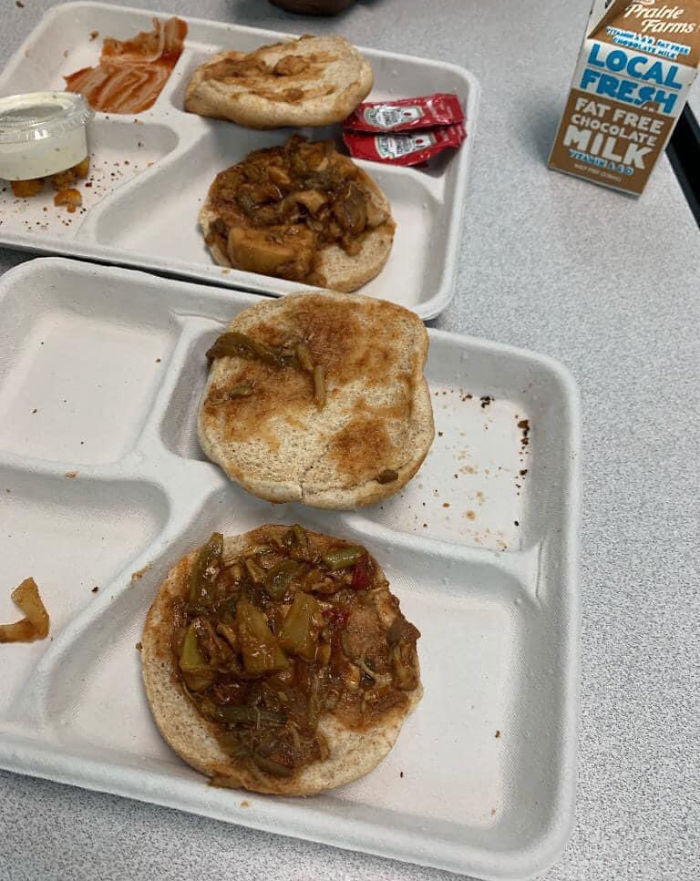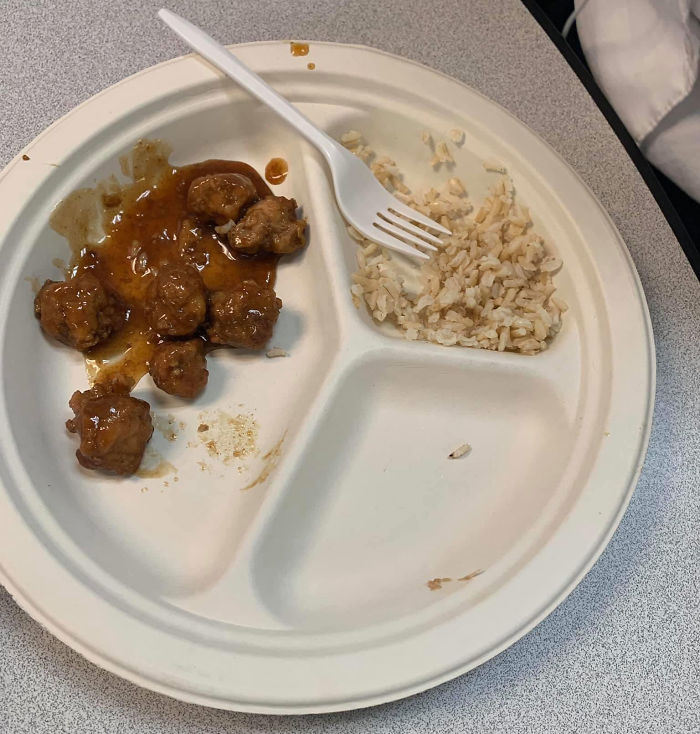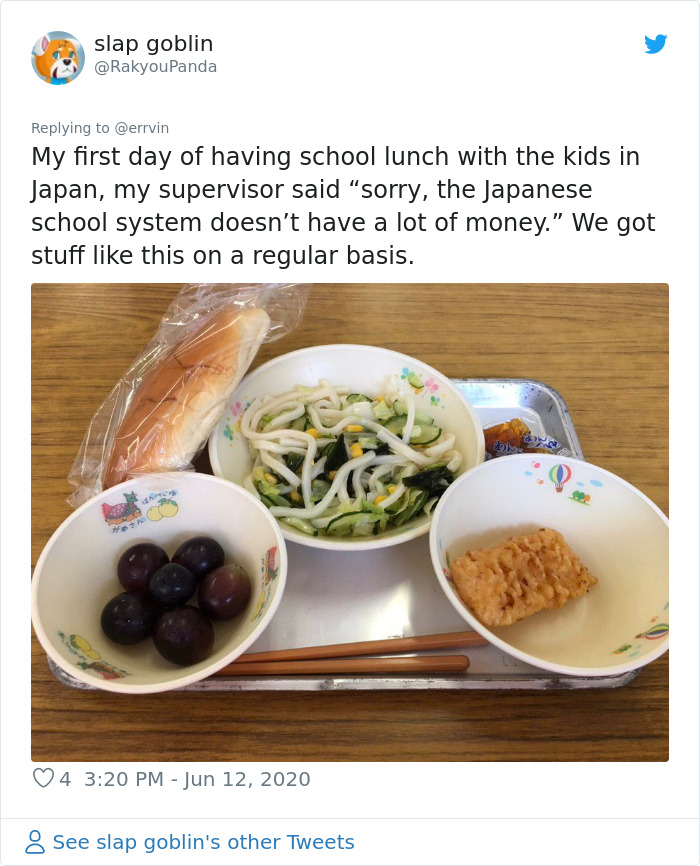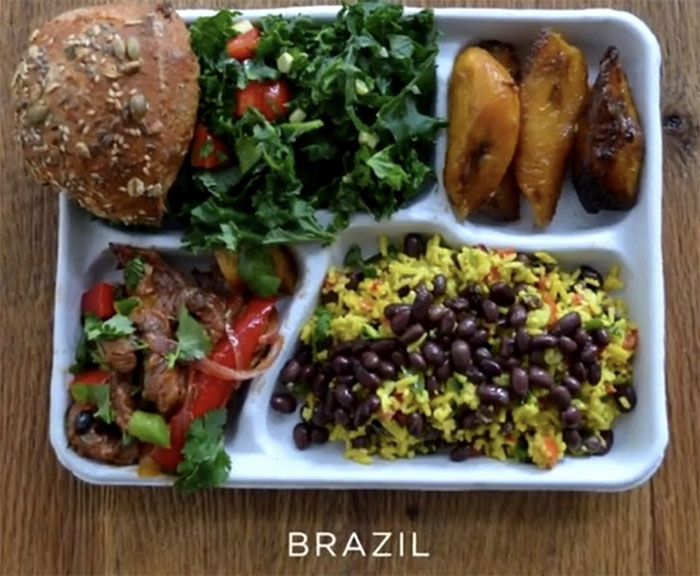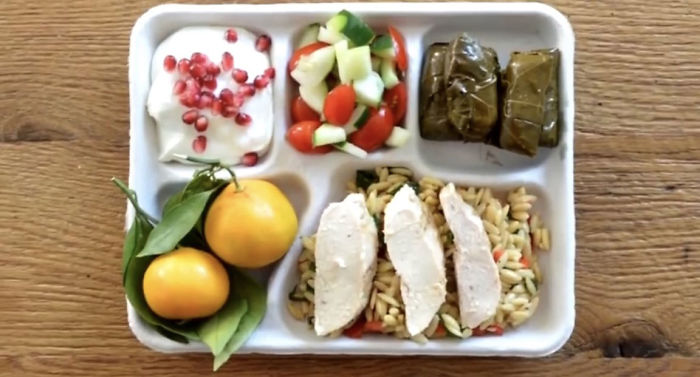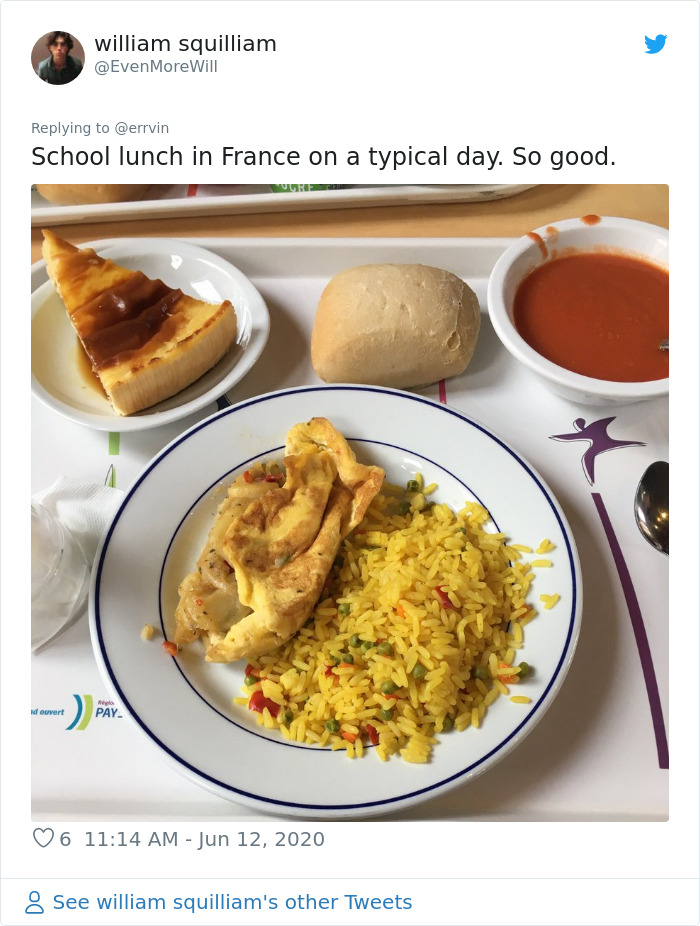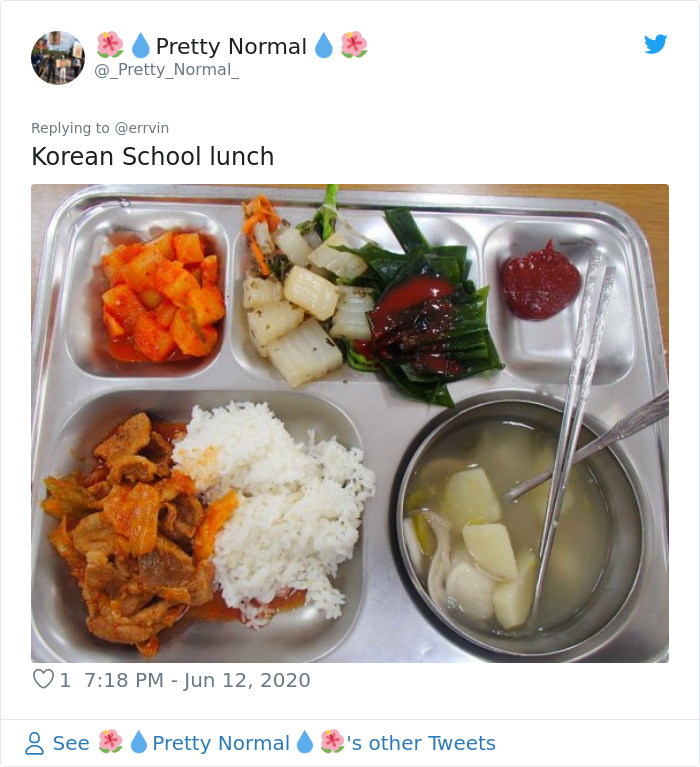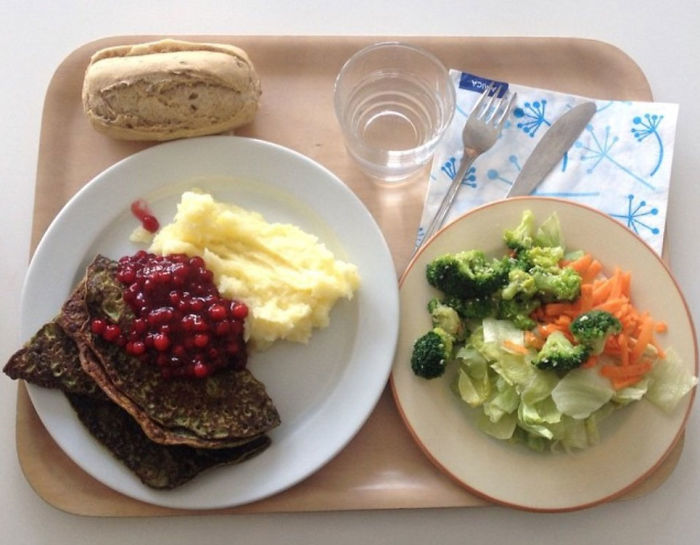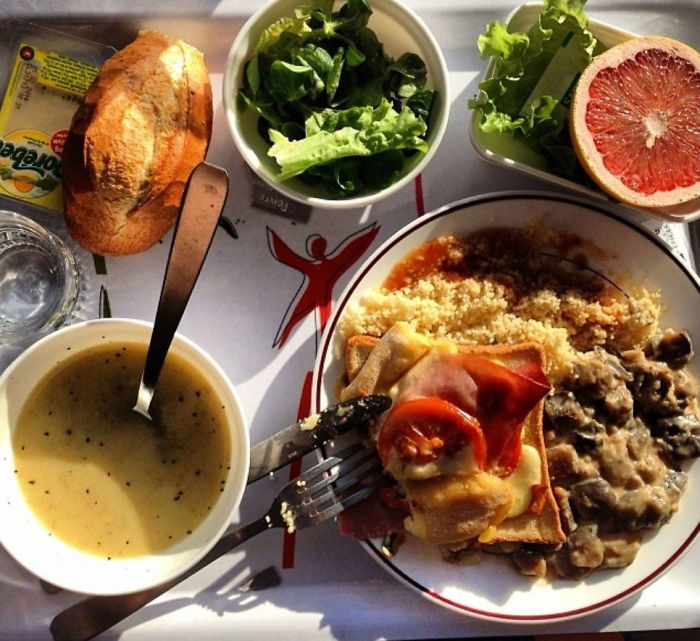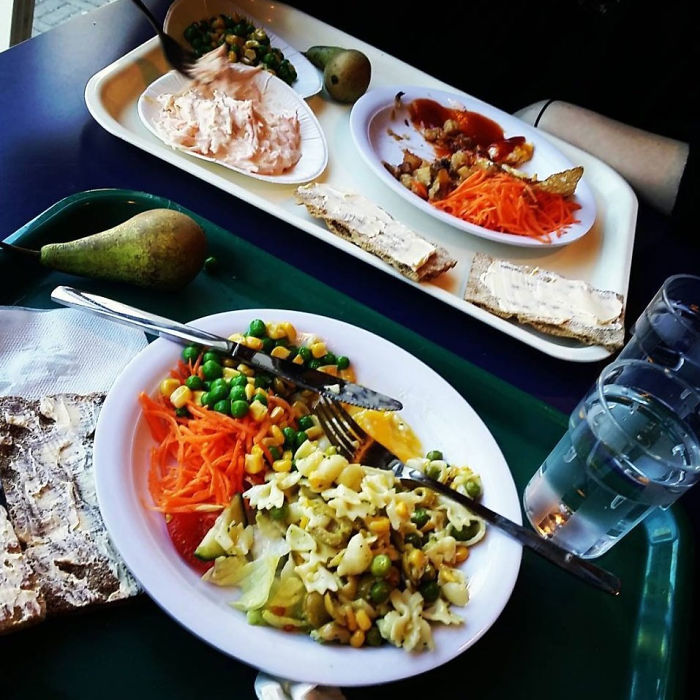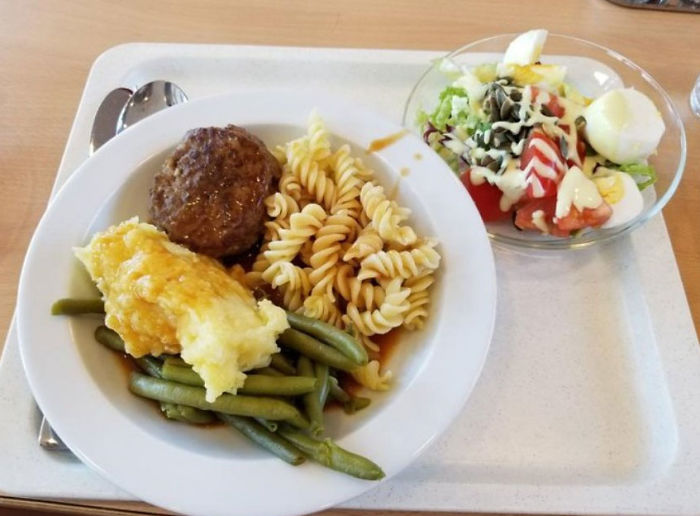Some people believe that the police in the United States get too much financial support while schools and places of learning are underfunded. To highlight just how underfunded some schools are and how funneling some of the money the police receive into education would help, Twitter user Errvin started a viral thread. They shared an associative photo of what school lunches in San Diego look like, even though the city’s police force gets an annual budget of 566 million dollars. However, someone pointed out, Errvin’s comparison wasn’t entirely correct: the school lunch they posted is from a school in Wyoming, not San Diego.
Erv, who has a degree in Criminal Justice from San Diego State University, told Bored Panda that they used the photo as a metaphor for what San Diego school lunches look like. “Regardless, I still have first-hand experience eating lunch like that growing up, and I believe many San Diegans can relate. I also remember pulling the pic from that exact website, Sweet Water Now. Which is the name of my old high school district. Without thinking, I assumed they were related. Had I known thousands of people were going to see the post, I would have put a more reputable source.” Read on for Erv’s in-depth analysis of law enforcement, education, and the root causes of crime.
Meanwhile, social media users pitched in with their own comparisons: some showed how bad the situation in some other parts of the US is while others illustrated how good school lunches look in some other parts of the world (France, in particular, looks absolutely magnifique). Scroll down, have a look, and share stories about the school lunches you ate, dear Pandas.
Errvin posted a photo of a school lunch from Wyoming and started a thread about how underfunded education in the US is by referring to school meals
Image credits: errvin
Erv told Bored Panda that they usually focus on light-hearted posts but they thought that this was a serious topic that needed to be discussed.
“Having studied criminal behavior, to explain what causes crime is very complex. If we were to put it simply, most crimes are committed because of a sense of need or lack of resources. Social and economical inequalities are factors that contribute to this need. For example, those in poverty are more likely to commit theft to fulfill their lack of resources. In most cases, there is an underlying reason that a crime is committed that can be connected back to this thought process,” Erv summarized why some people commit crimes.
“Now, we have to look at the purpose of the police/law enforcement in regards to crime. Contrary to popular belief, they don’t necessarily function as a preventative measure for crime. The perception of punishment sometimes acts as a deterrent to crime but most criminals are already fully aware of the consequences before they commit a crime. In most cases, police are used in response to a crime that has already been committed. So in practice, a larger police presence does not decrease crime,” they said.
Meanwhile, someone else showed us what food in German refugee camps looks like
Image credits: AstroTsukino
Image credits: AstroTsukino
Here’s a few photos of what some school meals in New York look like
Image credits: TiredinBrooklyn
On the other hand, meals in France look absolutely fantastic and are very nutritious
Image credits: hyperactivedude
Here’s another school lunch from the US
Image credits: shraq_kill_o_ne
Vive la France!
Image credits: Kevin_Biot
Here’s what school meals look like in some Western countries. Now that’s quality food
Image credits: FakeTiffanyAle
Image credits: FakeTiffanyAle
And here’s another US school meal for comparison. We’re not quite sure what this even is
Image credits: ancomwithadhd
Meanwhile, South Korea has delicious-looking school lunches
Image credits: PineOceanSUP
Compare that to the US again
Image credits: TimothyMariotti
If you thought that all UK school lunches look horrible, you’d be wrong
Image credits: Pink_Kitten42
Here’s what lunches in some Shelby County schools, in Tennessee look like
Image credits: _Marquett
And this is what Japanese school kids eat
Image credits: RakyouPanda
Here are some more Western school meals
Image credits: stiktalk
Image credits: EvenMoreWill
Image credits: _Pretty_Normal_
Image credits: xboxerHUN
Image credits: _SophiaLaurent_
Poverty, homelessness, and drug abuse are some of the root causes of crime
Erv’s ideal understanding of how ‘defunding the police’ would work would be to reallocate the funds that law enforcement receives to fund “other entities that would decrease poverty, homelessness, drug abuse, etc. which are the root causes of crime.”
“For example, if someone were having a mental health crisis, instead of sending over a police officer (who is not adequately trained to assess such a situation) we can send over an [appropriate] professional. An armed police officer does not need to respond to this type of call,” they gave examples of what they mean.
“There are also many real-life examples where the individual needing help ends up dying at the hands of the police who responded. We can also put more funding in those specific departments that deal with mental health so that individuals can receive the care they need so fewer incidents like this happen.”
“There is still so much more that the city can do for schools without state funding.”
However, education funding is a very tricky topic. “I didn’t intend for my post to get so much attention, so the narrative doesn’t exactly fit reality. Here in San Diego, most of the public schools are funded by the state of California. Law enforcement is funded by the city. So we can already see the disparity there when it comes to moving funds from police over to education. However, there is still some truth in the argument that we need to better feed our students than to give our police assault rifles and armored vehicles. There is still so much more that the city can do for schools without state funding.”
In Erv’s opinion, police departments are prime candidates of choice for having their budgets cut.
“The city of San Diego has over $1.5 billion in its budget that it can choose to allocate to each department, yet 37% of that goes to the Police Department. The next highest is Fire and Rescue at 19%, which I believe is justified since Southern California is a major hotspot for wildfires. The next is Parks and Rec at 8%. There are over 40 other departments that make up the remaining 36%, equal to that of the police.”
Things were different back in the ’70s
Erv told Bored Panda that in their personal experience, the photo of the school lunch that they posted is “fairly accurate.” They shared what school was like for them and compared it to their father’s days in the ‘70s.
“I went to one of the lowest income high schools in California. Total minority enrollment was 99% and 79% were economically disadvantaged. Maybe I thought that was the reason why our school lunches were so bad. But through the Twitter post I made, I was able to learn that other high schools faced the same issues, even if the socio-economic status of the student body was better than mine. My dad, who was a high schooler in Hawaii during the ‘70s told me that his school lunches were always hot and fresh, which was miles better than our preserved and reheated lunches we are feeding our kids now. What happened between then and now?”
“Some kids have as little as 15 minutes for a lunch period”
Just keep in mind that the issue is more complicated than simply throwing more money at education and hoping that everything works out fine. Changes in school lunches would require psychological changes in American food culture and how the US thinks about nutrition. And that involves a lot of hard work, personal growth, and won’t happen overnight. Not even with an endless supply of money.
It’s no secret that what we eat affects how we feel and how well we perform academically. However, where a kid lives and studies can mean drastically different school lunches. Imagine having to survive from Kindergarten all the way to 12th grade just on cheap junk food and sugary treats.
“When kids eat healthier foods, this can have a really important impact on their cognitive functioning, which can then translate potentially to better academic performance,” Juliana Cohen, an assistant professor of health sciences at Merrimack College in Massachusetts, told CNN. “So really, the healthier school meals are a win for both children and for schools.”
However, even though the situation in the US might not be as good as in some other Western countries, it doesn’t mean that all American students have it bad. Cohen told CNN that the US has some of the best nutrition standards in the world for school meals.
Unfortunately, there are other problems. “We don’t have national standards for the lunch period length, and as a result of that, we see a lot of variability within schools. Some kids have as little as 15 minutes for a lunch period. Some kids have a lot more than that,” Cohen said, pointing out that the less time children have to eat, the less healthy food they will eat.
Source link : https://www.boredpanda.com/school-lunch-comparison-police-funding

